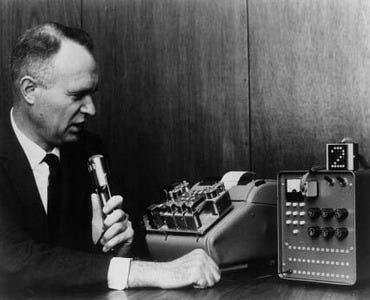Have you ever contemplated the future of Interactive Voice Response (IVR) within the framework of Contact Center systems? It’s intriguing to think about, given the fact that the first IVR was launched over six decades ago. So, what trajectory does this technology have in the future?
Before we delve into that, let’s revisit the definition of IVR itself.
Interactive Voice Response (IVR) is a telecommunications technology that facilitates a computer system’s interaction with callers using voice commands and touch-tone keypad selections. It streamlines a broad array of services like customer support, banking services, and many others. Capable of managing large call volumes, IVR systems can route calls to the right department, provide callers with information, and collect user input — rendering them an essential component of efficient business operations.
Reflecting on its history, IVR technology, which has been with us for over 60 years, saw one of its earliest known versions developed by Stephen Boies at IBM’s Thomas J. Watson Research Center in the mid-1970s. Dubbed “The Shoebox,” it was showcased at the 1962 World’s Fair in Seattle, capable of recognizing 16 words including digits from zero to nine and arithmetic commands like ‘plus’, ‘minus’, ‘total’, and ‘subtotal’.

https://www.ibm.com/ibm/history/exhibits/specialprod1/specialprod1_7.html
The modern iterations of Contact Center solutions still operate based on the foundations of the technology established over 60 years ago! They have been slightly modified with integrations like external Customer systems, CRM, ERP, etc., serving dual purposes — identifying the customer and automating customer service processes.
However, the industry’s current trend sees some major corporations transitioning from IVR to VoiceBots for complete customer service solutions.
This departure from the standard customer service flow involves the programming of utterances and intentions into the configuration of the bot. Is this shift advantageous? My personal opinion leans towards a ‘no’. I believe in harnessing the synergy between technology and conventional solutions. Instead of embracing complete automation, the focus should be on hybrid solutions.
To illustrate this, imagine a customer calling our hotline being connected to our bot, from where they can obtain assistance based on pre-designed stories. Still, it’s crucial not to block the potential of connecting with a live person. If a customer wishes to interact with a human, we shouldn’t deny that possibility. Furthermore, real-time sentiment analysis should be employed.
Widely available tools on the market allow us to gauge a customer’s sentiment. If we discern the customer’s annoyance, immediate action should be taken to flag the interaction, assign it priority, or magnetize it with a skill set, directing the call to a live person.
Besides this hybrid solution showcasing Bot-Agent collaboration, there is another aspect worth our consideration: Agent support. If we’re not prepared for a full-scale transformation of our IVR, we must think about how to assist our agents. AI solutions that monitor real-time interactions and offer responses based on a created knowledge base could be the answer.
I find immense satisfaction in working with the latter approach, as it represents our clients’ initial step into the realm of new technologies. Together, we develop an NLU/NLP model tailored to the client’s specific industry. But the creation of the model doesn’t signify the end of our task. For both agent support and automated customer service systems, learning is a continuous process. Unrecognized phrases, novel challenges, and topics that surface every day necessitate constant nurturing and advancement of the system.